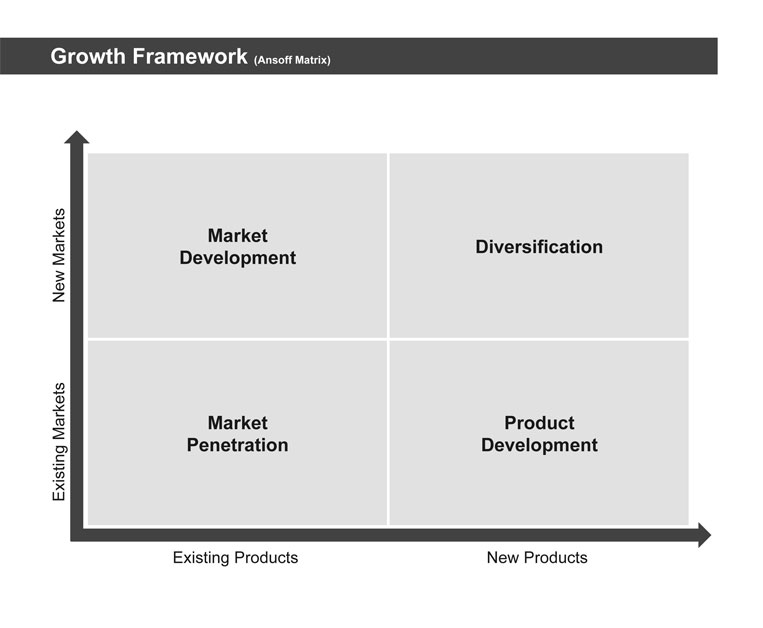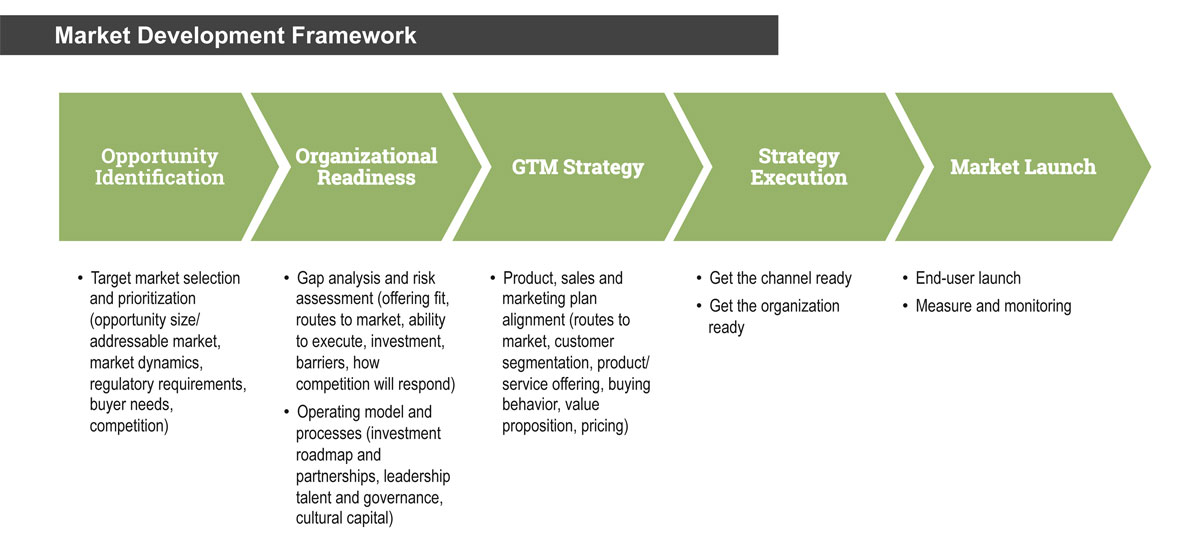New Market Entry: How to Fuel Growth by Penetrating New Markets
By James Dorn, President
Your manufacturing firm is constantly in pursuit of growth. But if there’s one thing that can derail your plans for advancement, it’s down cycles in your core markets. It’s fairly easy to keep pace with growth targets when times are good. But if you want your manufacturing firm to consistently outperform market growth, you must find ways to capture more market share even when your core markets are slowing down.
New market entry, or market development, allows you to do just that. By leveraging your existing products into new markets, you can increase revenue and capture new market share even as your core market is contracting.
New market entry is a smart and proven growth strategy. But in order to do it well, you must identify the right opportunities and effectively mitigate the associated risks. Going with your gut instincts isn’t enough. You need to use data, analytics and research to make the right choices for your firm.
New Market Entry: How to Know When the Time is Right
Before jumping into the nuts and bolts of market development, you must determine whether this particular growth strategy is right for your firm. The Ansoff Growth Matrix is a tool that models major growth strategies using existing versus new products in existing versus new markets. It can aid your team in visualizing the various approaches and gauging the degrees of risk and investment required by each. As a general rule, the further you extend beyond your core markets and product offerings, the more you’ll need to invest and the more risk you take on.

The Ansoff Growth Matrix consists of four quadrants representing the four major growth pathways. You can pursue each of these pathways using organic or inorganic strategies. The pathways include:
- Market penetration. Market penetration is about owning a bigger piece of the pie within your existing markets with your existing products. It’s the least risky approach because it doesn’t involve entering new markets or developing new products. Instead, you focus on expanding what you already own. This is the average firm’s default growth strategy. After all, the path of least resistance is to sell more of the widgets you’re already making to the markets you’re already engaging. But that all changes once a firm achieves dominant market share.
- Market development. As previously mentioned, market development involves taking your existing products into new verticals. This allows you to leverage your existing product offerings, but you must be willing to invest in the process of entering and penetrating new markets. The risk is higher than with market penetration, but less than with diversification.
- Product Development. With product development, you focus on developing ancillary products to sell into your existing customer base. For example, if you already sell solar panels, you might decide to develop and sell solar panel racking. With this approach, you shoulder the costs of developing new products and marketing them to your existing markets.
- Diversification. When you diversify, you develop new products for new markets. For obvious reasons, diversification is by far the riskiest of the four approaches. Not only do you incur the costs of developing new products and entering new markets, but you also add in the inherent risk of entering untested territory in terms of both products and markets.
Market development — or entry into new markets — makes the most sense for manufacturing firms in two situations. The first is when firms already have dominant market share in their core markets with their core products. Sure, it may still be possible to achieve incremental growth with further market penetration. But the cost of earning an extra percentage or two is often prohibitively high. The reward simply isn’t worth the investment. In this situation, it’s reasonable to expect that you might achieve more growth by expanding into adjacent markets where you have less market share.
The second instance in which market development is a smart choice is when markets are cycling down. In this context, market development allows you to spread your resources across multiple markets, thus providing additional financial stability. If one market cycles down, you can place more resources in other markets that are cycling up.
Pursuing Growth with New Market Development
When we partner with clients (such as Georgia-Pacific) to pursue new market development, we walk them through a disciplined, data-driven process that allows them to make informed choices and increases their chances of success.

This process includes:
- Opportunity identification. In the first phase of our process, we conduct market research to identify the right industry or industries and segment(s) within them. This analysis takes into consideration each segment’s opportunity size/addressable market, market dynamics, regulatory requirements, buyer needs, competition, and so on.
- Organizational readiness. Once a client zeroes in on the ripest opportunities, we map those opportunities back to their organization. This determines what they need to do to operationally support new market entry. To do this, we take a close look at each functional group within the organization and produce a scorecard. For example, we might find that an organization’s current marketing strategy and materials aren’t appropriate for the new market. As part of this process, we provide our clients with a gap analysis and a risk assessment of what they need to do to make sure that their organization can actually service the markets they intend to enter.
- Go-to-market strategy. Next, we prepare a go-to-market strategy for our clients that describes exactly how they will support the new market. The go-to-market strategy outlines the routes to market, sales models, customer segments, pricing and more. It also includes specific recommendations around messaging, value propositions and other building blocks for external communications.
- Strategy execution. During the strategy execution phase, we work with clients to make sure they and their sales channels are ready to execute our strategy for new market entry. For example, some organizations may need to partner with new distributors in order to gain access to a new market. Before launching their products, they will need to onboard those distributors and get them up to speed on their portfolio. We provide our clients with sales enablement, communication and training materials for their sales team to use as they train the new distributors. At the same time, we work with manufacturing companies to implement our recommendations for organizational readiness. This involves making sure that each functional team, from customer service and marketing to product sales, has the right training and resources to succeed in the new market.
- Market launch. Once all the necessary infrastructure, training and logistics are in place, it’s time for our clients to launch their products into the new market.
For many manufacturing companies, new market entry represents a relatively low-risk opportunity to achieve new growth and insulate their investments by diversifying their end-market portfolio across multiple markets. Want Dorn’s help identifying the best growth strategy for your manufacturing company? We’d love to talk.




